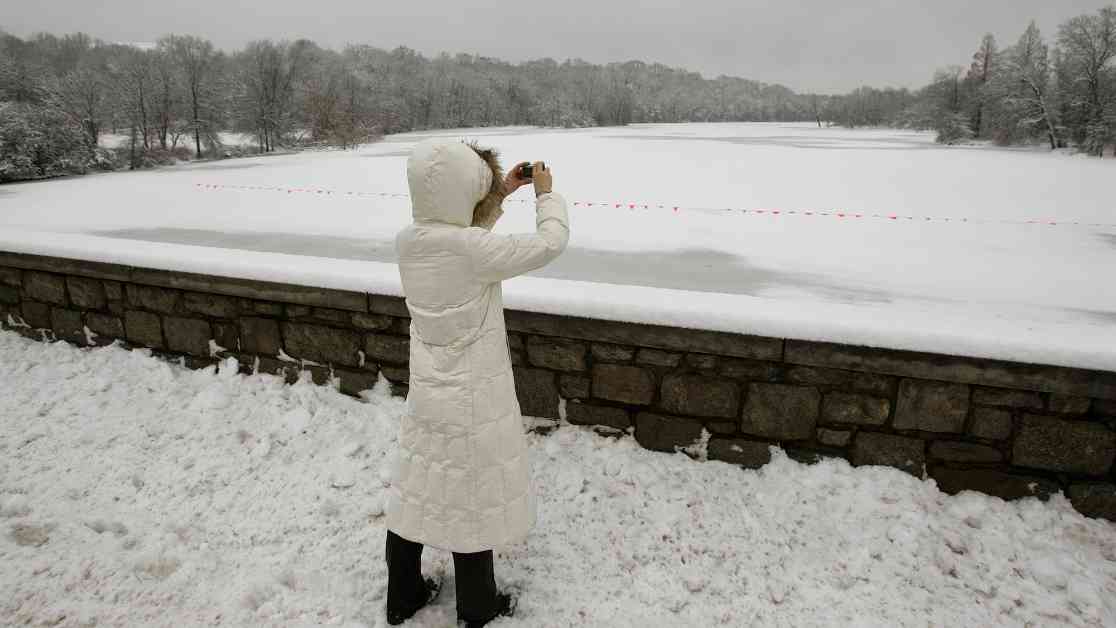So, back in the day, winter in Princeton, New Jersey meant one thing: frozen Lake Carnegie. People used to lace up their skates and glide across the ice like nobody’s business. But nowadays, forget about it. The lake barely freezes anymore, thanks to winters warming up about 4 degrees Fahrenheit since 1970. Grace Liu, a former Princeton University student turned Ph.D. candidate at Carnegie Mellon University, discovered this trend in 2020. She spoke to old-timers and dug through old newspapers to create a timeline of the lake’s ice conditions.
According to Liu, folks definitely noticed they couldn’t hit the ice as often as before. But get this – they didn’t really connect the dots to climate change. Fast forward to 2021, when the university’s alumni magazine featured Liu’s research. The comment section was flooded with nostalgic memories of moonlit skating, rowdy hockey games, and sipping hot cocoa by the frozen shore. Liu started pondering: Could experiencing a direct loss like this make climate change hit home for people?
That question led to her study, recently published in Nature Human Behavior. And guess what? The study found that presenting data in a binary way — like a clear yes or no — can shake people out of their climate change apathy.
Liu teamed up with Princeton professors to test how folks reacted to two types of graphs. One showed a gradual rise in winter temperatures in a made-up town, while the other simply showed whether the lake froze each year or not. Turns out, people who saw the second chart perceived climate change as causing more sudden changes. Crazy, right?
Even when they added a trend line to the gradual temperature graph to make the warming super obvious, the binary lake data still hit harder. To make sure the results weren’t a fluke, the researchers checked real data from towns in the U.S. and Europe. Same deal – binary visuals got the message across better.
So, what’s the big takeaway here? If we want folks to take climate change seriously, we gotta show them clear, concrete shifts instead of slow, sneaky trends. Think lost snowmen or canceled summer fun due to wildfire smoke.
See, the thing is, people tend to adjust to rising temperatures pretty darn quickly. It’s like that story about the frog in boiling water. If you crank up the heat slowly, the frog won’t notice until it’s too late. Same goes for us humans with climate change. We get used to warmer weather way too fast.
Now, many scientists thought that once we saw the destruction caused by climate change firsthand, governments would finally step up and do something. But even after weather disasters cost the U.S. over $180 billion in 2020, climate change still isn’t a top concern for Americans. Crazy, right?
One graph won’t magically make everyone care about climate change. But if we bombard people with eye-catching visuals more often, it might help keep the issue front and center. Turns out, binary data tricks our brains into thinking things are changing suddenly when they’re actually changing gradually.
Jennifer Marlon, a smarty-pants at the Yale Program on Climate Change Communication, says that visuals are powerful tools for getting the message across. But most scientists don’t use them enough. Binary graphics could be just the ticket for getting folks to pay attention to climate change. Sure, they oversimplify things, but sometimes you gotta sacrifice complexity for impact.
Remember those climate stripes? The ones that show temperature changes with red and blue stripes? Well, turns out they work so well because they turn a boring trend into a snazzy visual that hits you in the gut. It’s all about making the message stick.
In the end, it’s not just freezing lakes that can be communicated in bold new ways — global temperatures can too. Time to ditch the gradual stuff and go for the jugular. The climate stripes visual really hammers home the warming trend in a way that anyone can understand. And that’s a win in my book.














